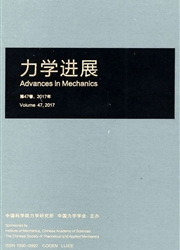

 中文摘要:
中文摘要:
In a network described by a graph,only topological structure information is considered to determine how the nodes are connected by edges.Non-topological information denotes that which cannot be determined directly from topological information.This paper shows,by a simple example where scientists in three research groups and one external group form four communities,that in some real world networks non-topological information (in this example,the research group affiliation) dominates community division.If the information has some influence on the network topological structure,the question arises as to how to find a suitable algorithm to identify the communities based only on the network topology.We show that weighted Newman algorithm may be the best choice for this example.We believe that this idea is general for real-world complex networks.
 英文摘要:
英文摘要:
In a network described by a graph, only topological structure information is considered to determine how the nodes are connected by edges. Non-topological information denotes that which cannot be determined directly from topological information. This paper shows, by a simple example where scientists in three research groups and one external group form four communities, that in some real world networks non-topological information (in this example, the research group affiliation) dominates community division. If the information has some influence on the network topological structure, the question arises as to how to find a suitable algorithm to identify the communities based only on the network topology. We show that weighted Newman algorithm may be the best choice for this example. We believe that this idea is general for real-world complex networks.
 同期刊论文项目
同期刊论文项目
 同项目期刊论文
同项目期刊论文
 Free-running period of neurons in the suprachiasmatic nucleus: Its dependence on the distribution of
Free-running period of neurons in the suprachiasmatic nucleus: Its dependence on the distribution of The process of coevolutionary competitive exclusion: speciation, multifractality and power-laws in c
The process of coevolutionary competitive exclusion: speciation, multifractality and power-laws in c Reducing the heterogeneity of payoffs: An effective way to promote cooperation in the prisoner's dil
Reducing the heterogeneity of payoffs: An effective way to promote cooperation in the prisoner's dil 期刊信息
期刊信息
